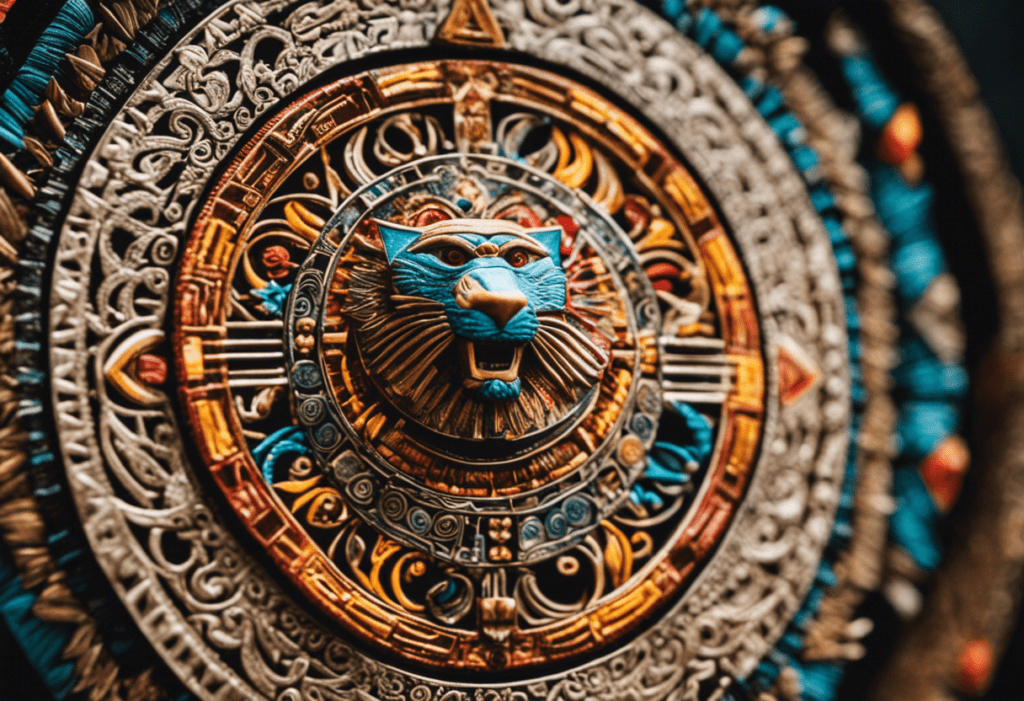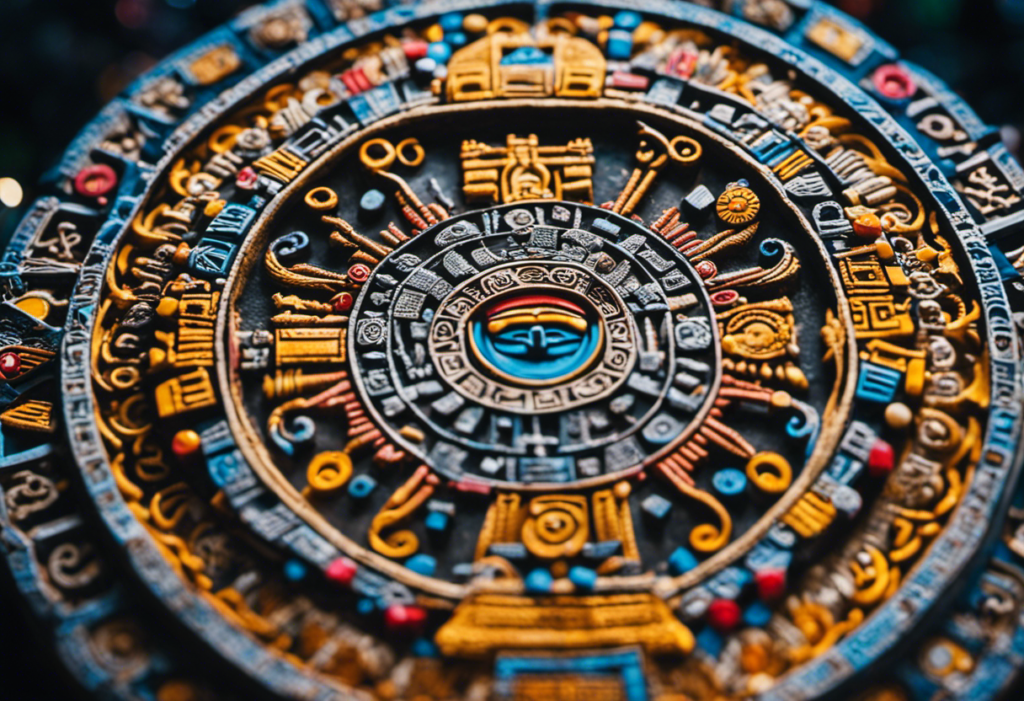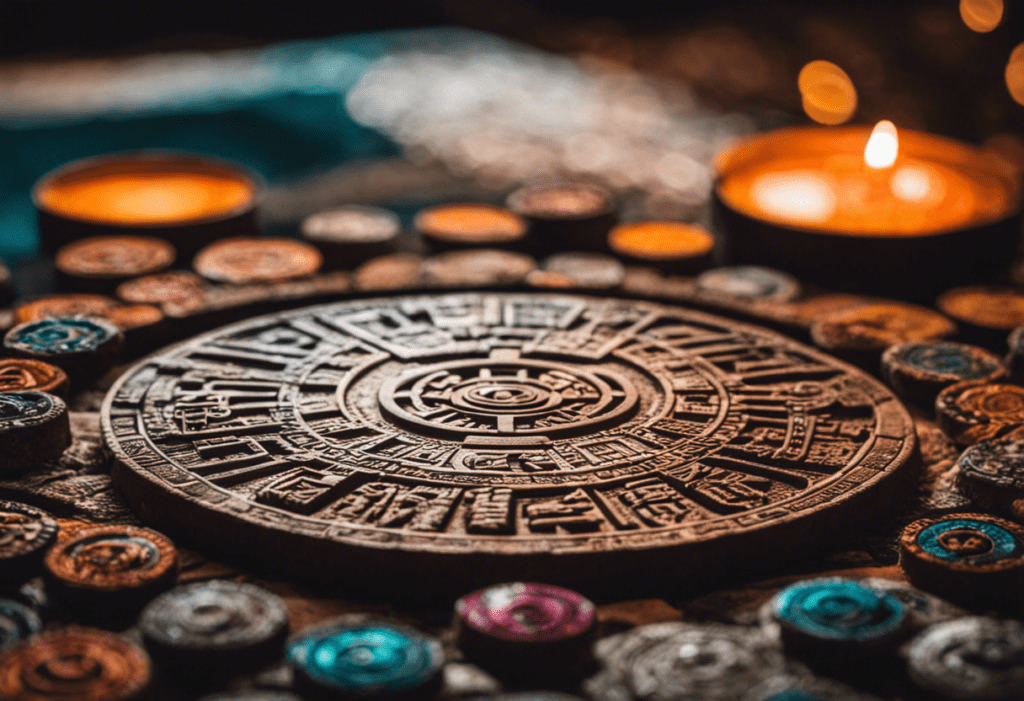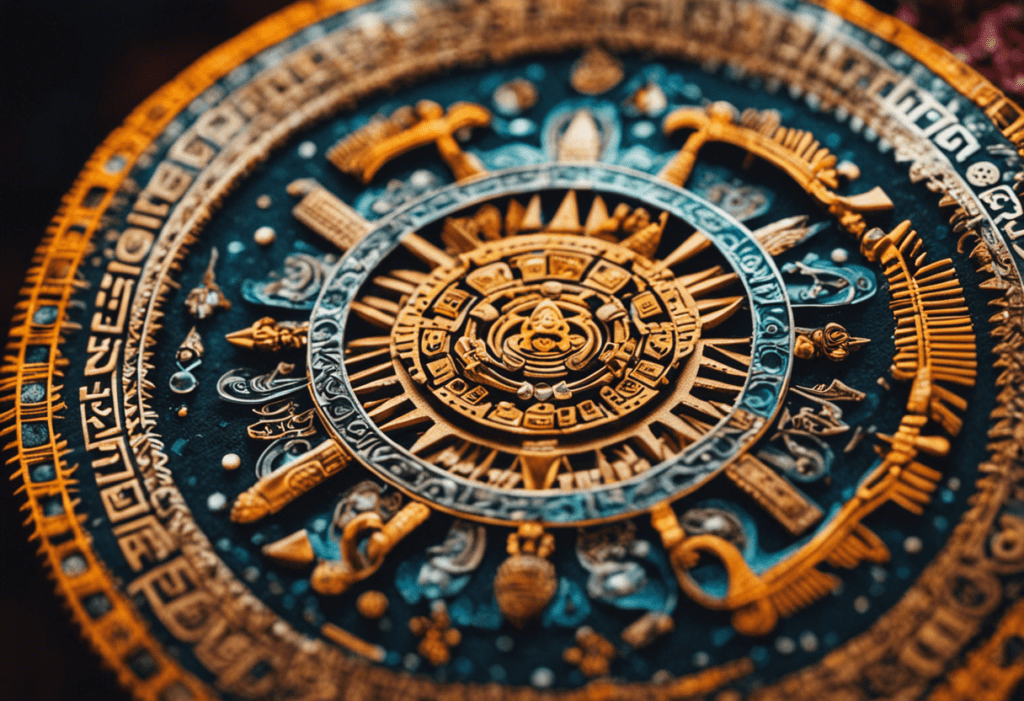According to Aztec beliefs and traditions, each animal depicted in the Aztec calendar held a significant role in their society. With the Mighty Jaguar symbolizing power and strength, the Sacred Quetzal Bird serving as a messenger of the gods, and the Wise Owl guarding knowledge and wisdom, these creatures played a pivotal role in shaping the Aztec culture.
In this article, we will explore the significance and symbolism behind each creature, shedding light on the diverse aspects of Aztec mythology and spirituality.
Key Takeaways
- The Aztec calendar animals, such as the mighty jaguar, sacred quetzal bird, wise owl, and serpent, played a crucial role in shaping Aztec culture, beliefs, and rituals, representing different gods and their attributes.
- The serpent in Aztec culture symbolized transformation and acted as a bridge between the mortal world and realms beyond, being associated with gods and deities.
- The playful monkey was known as a trickster and symbolized joyful energy, cleverness, agility, and a mischievous character. It was associated with the god Xochipilli and represented creativity in music, dance, and games.
- The monkey also symbolized mischief, chaos, and unpredictability, often depicted performing acrobatic feats to emphasize its agility and adaptability. It served as a reminder to embrace spontaneity, joy, creativity, and imagination in life.
The Mighty Jaguar: Symbol of Power and Strength
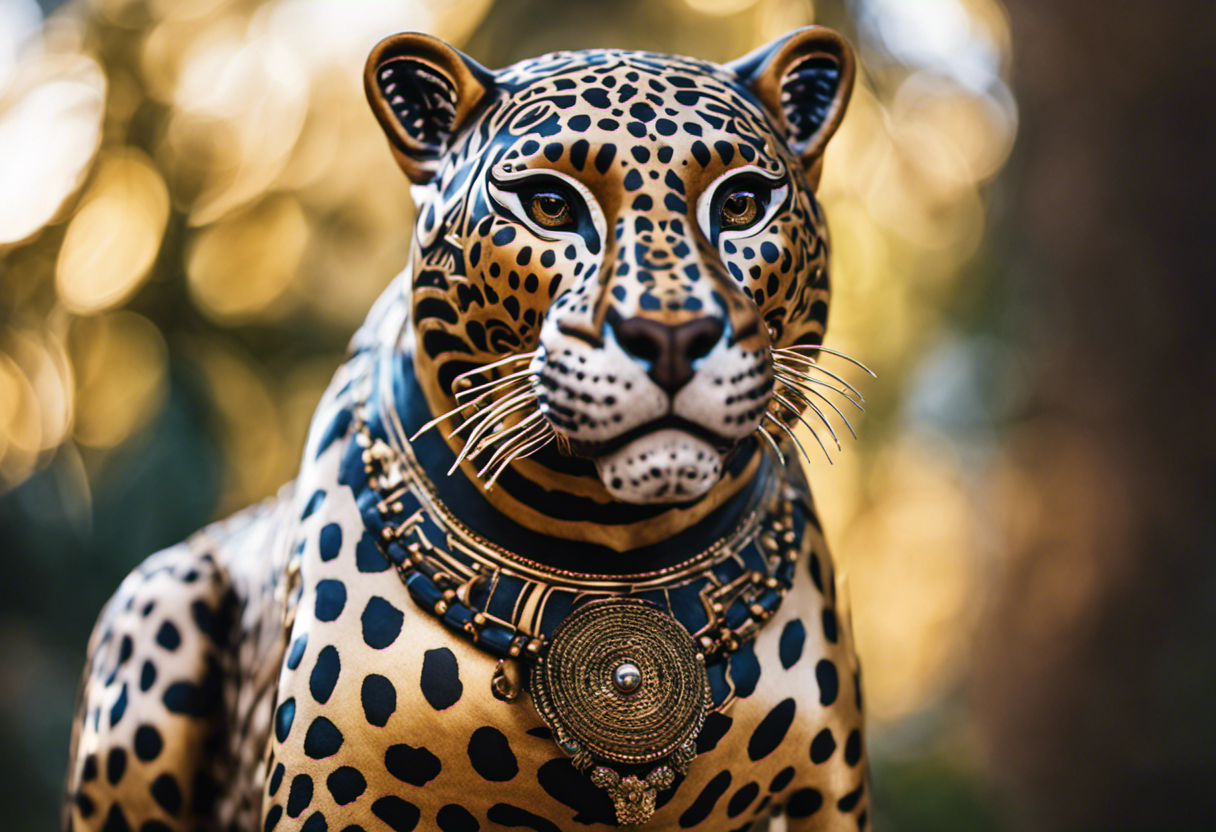

The mighty jaguar, known for its immense power and strength, holds great significance in Aztec culture. The role of the jaguar in Aztec mythology and rituals highlights its importance as a symbol of both physical and spiritual prowess. In Aztec belief, the jaguar was seen as a divine creature, associated with the gods and considered a protector of the people.
Understanding the spiritual significance of the jaguar in Aztec culture requires examining its role in mythology. The Aztecs believed that the jaguar was a representation of Tezcatlipoca, the god of the night sky and sorcery. Tezcatlipoca was considered one of the most powerful gods, and his association with the jaguar reflected his strength and dominance. The jaguar was also associated with warfare and was believed to grant warriors the ability to tap into their primal instincts and become fierce and unstoppable on the battlefield.
In addition to its association with Tezcatlipoca, the jaguar played a vital role in Aztec rituals. It was often depicted in ceremonial masks and costumes worn by priests during religious ceremonies. These rituals were believed to connect the participants with the divine and harness the power of the jaguar. The jaguar’s presence in these rituals symbolized the ability to communicate with the spiritual realm and tap into supernatural forces.
The Sacred Quetzal Bird: Messenger of the Gods
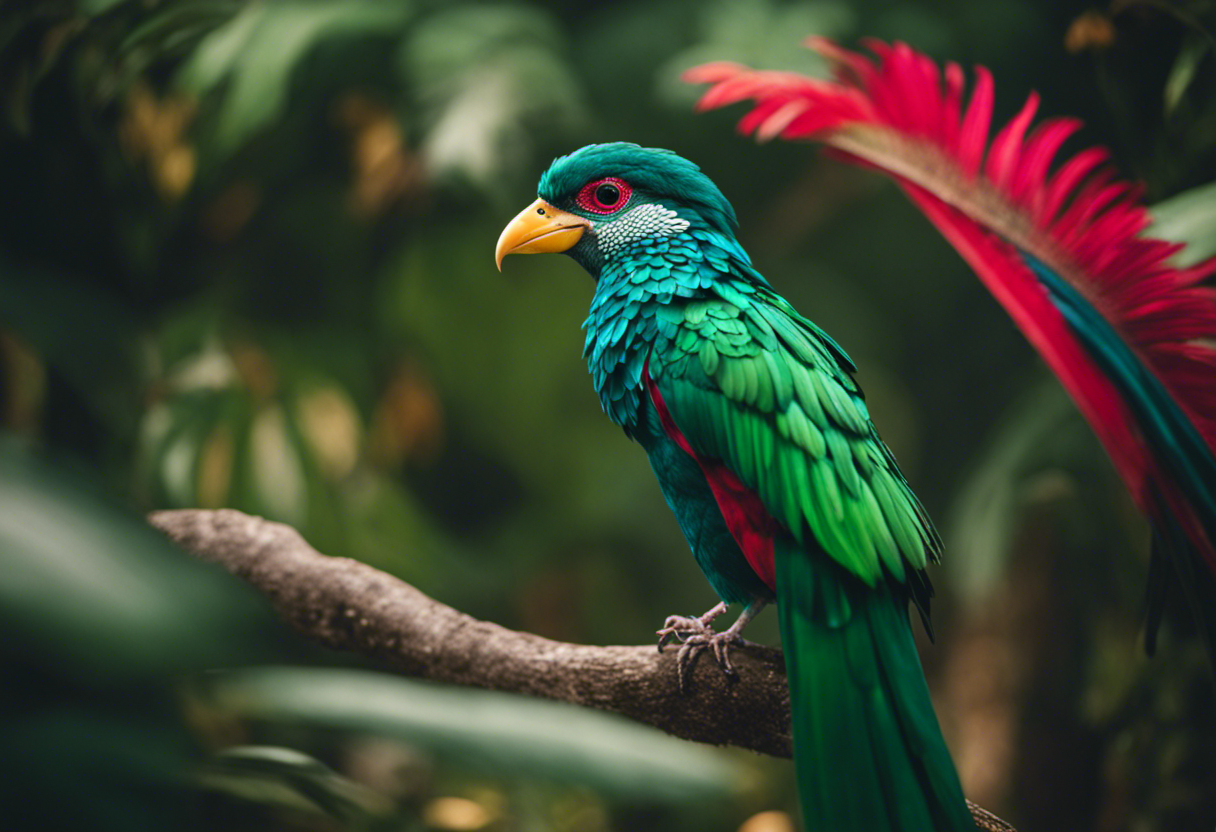

During the time of ancient Aztec civilization, the sacred Quetzal bird played a significant role as the messenger of the gods. Revered for its vibrant plumage and graceful flight, the Quetzal bird held a special place in Aztec mythology and rituals.
The Quetzal Bird: Its Role in Aztec Mythology
- Symbol of divinity: The Quetzal bird was considered a divine creature, representing the gods and their messages to the Aztec people.
- Connection to Quetzalcoatl: The bird was closely associated with the deity Quetzalcoatl, the feathered serpent god, who was believed to have taken the form of a Quetzal bird.
- Creation myth: In Aztec mythology, it is said that the Quetzal bird played a crucial role in the creation of the world, carrying the bones of the previous beings to create new life.
- Symbol of freedom and beauty: The Quetzal bird was seen as a symbol of freedom and beauty, embodying the natural world and its wonders.
- Spiritual guidance: It was believed that the Quetzal bird could act as a guide to the spiritual realm, helping the Aztec people communicate with the gods and receive their blessings.
The Quetzal Bird: Its Importance in Aztec Rituals
- Offering to the gods: The Quetzal bird feathers were highly prized and used as offerings in religious ceremonies, symbolizing the connection between the earthly and divine realms.
- Ritual dances: In sacred rituals, dancers would wear headdresses adorned with Quetzal feathers to honor the gods and invoke their presence.
- Divination: The Quetzal bird was consulted in divination practices, with its appearance or behavior believed to hold messages and omens from the gods.
- Celebrations: During special events and celebrations, the Quetzal bird was depicted in art and sculptures as a sign of good fortune and prosperity.
- Ritual sacrifices: In some instances, the Quetzal bird was offered as a sacrifice to appease the gods and ensure their favor upon the Aztec people.
The Wise Owl: Guardian of Knowledge and Wisdom
An esteemed symbol of wisdom and knowledge, owls were revered by the ancient Aztecs and served as the guardians of knowledge. The owl’s role in different cultures and mythologies is significant, as it is often associated with wisdom and foresight. In Greek mythology, the goddess Athena, known for her wisdom, had an owl as her companion. The owl was considered a symbol of Athena’s wisdom and was often depicted with her. Similarly, in Hindu mythology, the owl is associated with the goddess of knowledge, Saraswati. In Native American cultures, the owl is seen as a harbinger of wisdom and a guide in the dark.
The owl’s unique adaptations for hunting and survival contribute to its symbolic representation of wisdom. Owls are known for their exceptional night vision, thanks to their large, forward-facing eyes. Their ability to rotate their heads up to 270 degrees enables them to scan their surroundings without moving their bodies. Additionally, the soft feathers on their wings allow for silent flight, making them highly effective hunters. These adaptations make the owl a symbol of keen observation and the ability to perceive hidden truths.
The Serpent: Symbol of Transformation and Rebirth
Serpent, a symbol of transformation and rebirth, held great importance in the ancient Aztec culture. The Aztecs believed that the serpent played a significant role in mythology and had a strong connection to the underworld. Here are five key aspects of the serpent’s significance in Aztec culture:
- Transformation: The serpent was associated with transformative powers, representing the cyclical nature of life and death. It was believed to shed its skin and emerge renewed, symbolizing rebirth and regeneration.
- Creation: In Aztec mythology, the serpent played a crucial role in the creation of the world. It was believed to have been involved in the formation of the earth, sky, and even humanity itself.
- Wisdom: The serpent was seen as a wise and knowledgeable creature, possessing secret knowledge of the cosmos and the spiritual realm. It was believed to be a guide for spiritual journeys and a source of divine wisdom.
- Underworld Connection: The serpent was closely linked to the underworld, serving as a messenger between the earthly realm and the realm of the dead. It was often depicted as a guardian of the underworld and a companion to the gods of death.
- Ritual Sacrifice: The serpent was associated with ritual sacrifice, as it was believed to have the power to transport the souls of sacrificial victims to the afterlife. Its presence in ceremonial rituals represented the transformation of the sacrificed individual into a divine being.
The serpent’s multifaceted symbolism in Aztec culture reflects its role as a powerful agent of transformation and rebirth, connecting the mortal world with the realms beyond.
The Playful Monkey: Trickster and Symbol of Joyful Energy
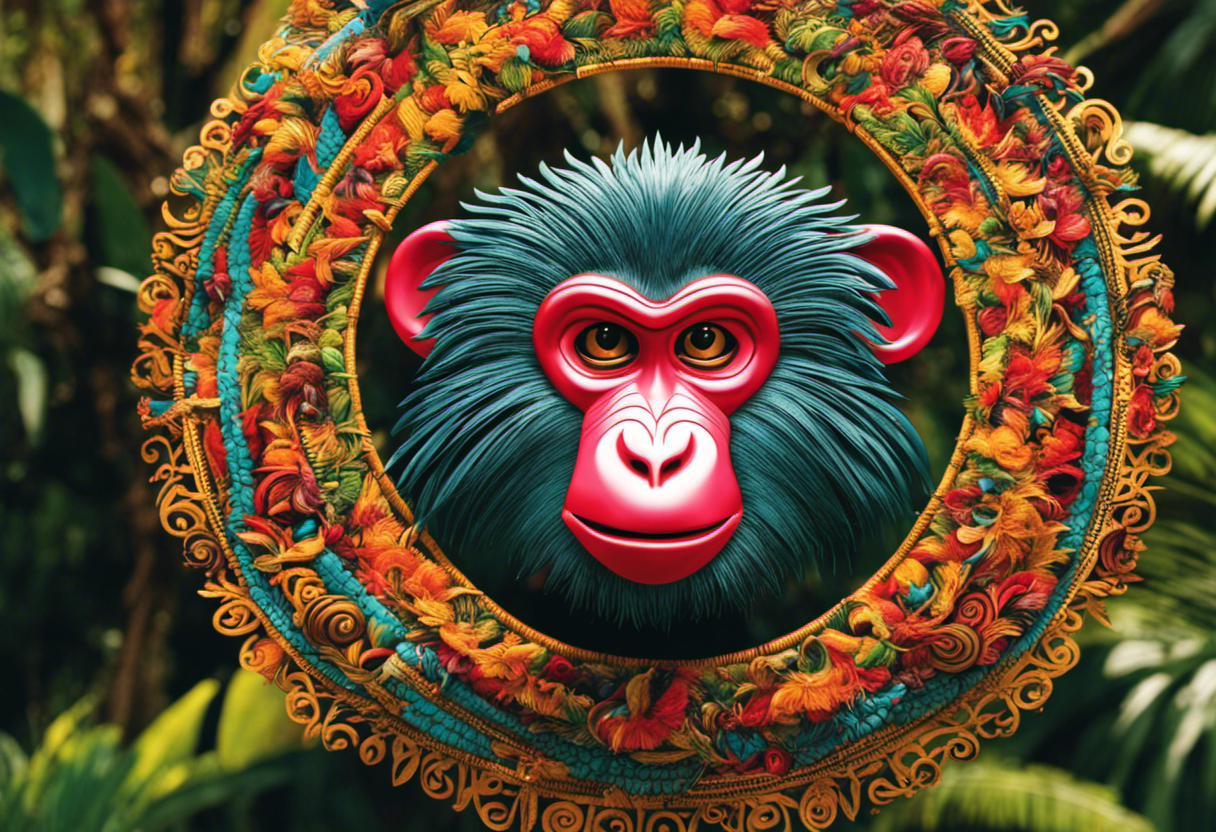

With its mischievous nature and boundless energy, the playful monkey was both a trickster and a symbol of joyful exuberance in Aztec culture. In Aztec mythology, the monkey played a significant role as a mischievous character who often outsmarted others with its cleverness and agility. It was believed to possess a great sense of humor and was known for its ability to create chaos and confusion. The monkey was also associated with the god Xochipilli, the deity of music, dance, and games, further emphasizing its role as a symbol of joyful energy.
The monkey’s association with creativity was reflected in its depiction in Aztec artwork and architecture. It was often portrayed in vibrant colors and intricate designs, showcasing its playful and imaginative nature. Additionally, the monkey was believed to be a guardian of knowledge and was often depicted holding a scroll or a book, symbolizing its association with wisdom and intelligence.
Furthermore, the monkey’s mischievous and playful nature made it a symbol of mischief and unpredictability. Its ability to swing through trees and perform acrobatic feats represented its agility and adaptability. The monkey’s presence in Aztec culture served as a reminder to embrace spontaneity, creativity, and joy in one’s life.
Conclusion
In conclusion, the Aztec calendar animals each hold significant meanings in Aztec culture.
The Mighty Jaguar represents power and strength, while the Sacred Quetzal Bird is considered a messenger of the gods.
The Wise Owl is revered as the guardian of knowledge and wisdom, and the Serpent symbolizes transformation and rebirth.
Finally, the Playful Monkey serves as a trickster and symbol of joyful energy.
It is intriguing to note that these animals were not only seen as physical beings but also as spiritual entities that played important roles in the Aztec worldview.

